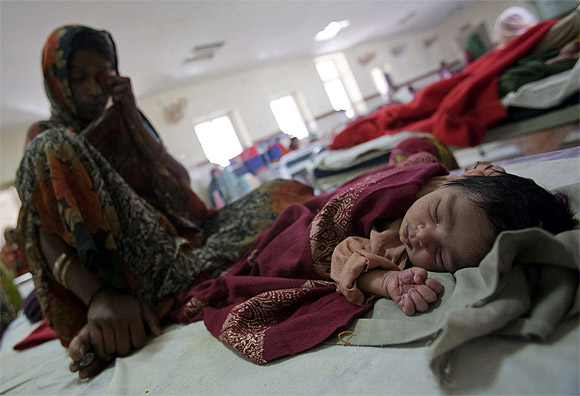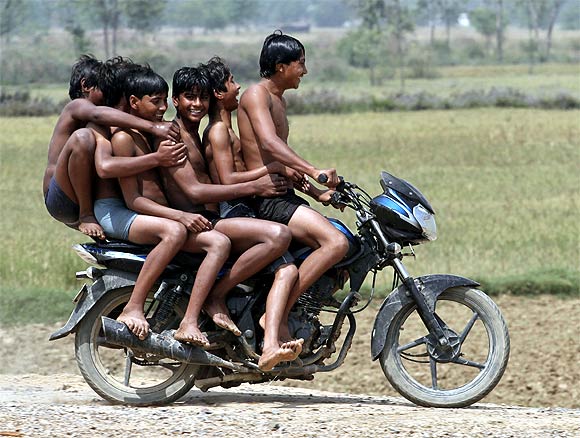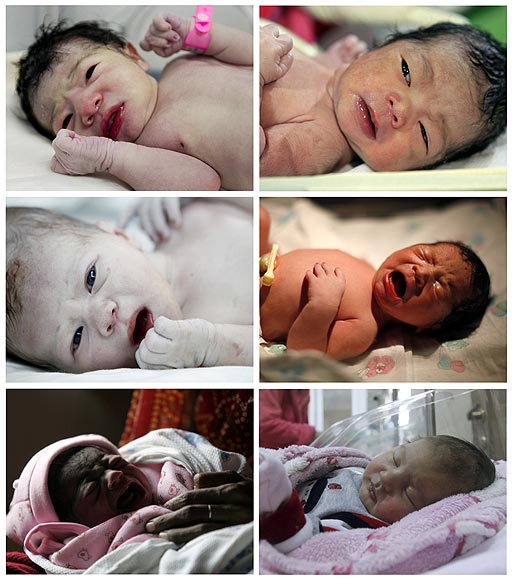
Gender empowerment rather than hard-core 'family planning' lies at the heart of India's population stabilisation efforts, says Amarjeet Sinha
The good news in the Registrar General of India's Sample Registration System Statistical Report, 2010, is that the total fertility rate, which stood at 2.9 in 2005, is down to 2.5 in 2010, with 10 states attaining replacement-level fertility. The better news is that decline in fertility has been significant even in states with hitherto unsatisfactory health indicators (that were once referred to as Bimaru states). Though still three-plus in most of these states, the decline is faster than the decline in the national average.
These developments contradict the notion that a few hard-core "family planning types" harbour that sterilisation alone is the way to population stabilisation. They actually considered the demand-side incentive for institutional deliveries under the Janani Suraksha Yojana retrograde on the ground that it would lead to more childbirth. They argued that the compensation for loss of wage following a vasectomy or tubectomy is lower than the JSY dole of Rs 1,400 in rural areas and that this was sending the wrong signal.
The evidence is completely to the contrary. The 2010 SRS has indicated that population stabilisation is much more a development issue, reflected best in the replacement level fertility rates in all states -- whether it is Bihar or Kerala -- when it comes to women who have passed Class X or Class XII. The strong correlation between women completing secondary education and low fertility is conclusive proof of this.
Click on NEXT for more...

This does not mean that the family planning programme does not need attention. Survey after survey has highlighted the very high, unmet need both for temporary and permanent family planning methods.
Also, male participation in population stabilisation is still extremely low. Indeed, states like Tamil Nadu also need to celebrate their low TFR with caution. They have made family planning completely the responsibility of the woman of the house. That is not how it ought to be. We need to encourage male participation more effectively, just as we need to encourage reversible methods more widely.
Skill and service quality issues also need attention. Poor women have voted with their feet for small families. Indeed, the demand for small families is so high that even when the quality of family planning services is compromised, a large number still want to avail of the services the state provides.
We need to provide quality and guaranteed services. We also need to promote counselling and popularise reversible methods and other forms of contraception more effectively.
Click on NEXT for more...

The Accredited Social Health Activists, the ASHAs, the foot-soldiers of the National Rural Health Mission, have been ably connecting households to health facilities. But there are other important components of the strategy for family planning, such as focusing on training nurses and auxiliary nurse midwives for intrauterine contraceptive device insertion and accreditation of quality private providers who follow the protocol.
Women's health has to be seen in a wider frame of women's well-being. So gender empowerment, social equality, and provision of good quality basic health care services across hamlets, villages and towns for over a billion people are the answer to population stabilisation.
It encompasses a range of social change, such as increasing the marriageable age, providing women with opportunities to participate in secondary and higher-secondary education and so on.
Under-nutrition, too, has a gendered history and in societies in which gender equality is organic to social relationships the gaps are narrower. India needs to recognise gender and social equity and entitlement of the poor, the vulnerable and women as inalienable for the country to make rapid progress on human development indicators. Hierarchies of access to services and selective participation in human development opportunities are not the way to improved well-being.
Click on NEXT for more...

The SRS has also brought out the need for better care of children in the age group of six to 36 months. Though India's infant and neo-natal mortality has been declining significantly in the past few years, there is still a need for a faster pace of decline in the under-five mortality rate.
The health care deficits of all boys in the 0-14 age group and of girls in the 0-18 age group need to be removed through guaranteed health care programmes for them. With one-third of India's population in this age group, India needs to ensure that the emerging young population does not suffer from physical and mental disability in childhood, compromising the human development potential itself.
It is only through better survival and the removal of irreversible debilitating impact of under-nutrition in children in the age group of six to 36 months that the country will be able to move towards the cherished goal of population stabilisation.
It is interesting that the decline in infant and maternal mortality, crude death and birth rates and total fertility rate are all taking place simultaneously, highlighting the inter-connectedness of all these health indicators.
The efforts by the states with NRHM resources and state-led leadership over the past seven years are beginning to show. An increase in government spending from a little below one per cent of GDP to a little over a per cent has started showing results.
Surely, if public expenditure on health were raised to three per cent of GDP, as has been promised for several years, and if under-nutrition issues are addressed in a wider human development framework and not through narrow departmentalism, population stabilisation also will become easier and faster to achieve.
Click on NEXT for more...
...